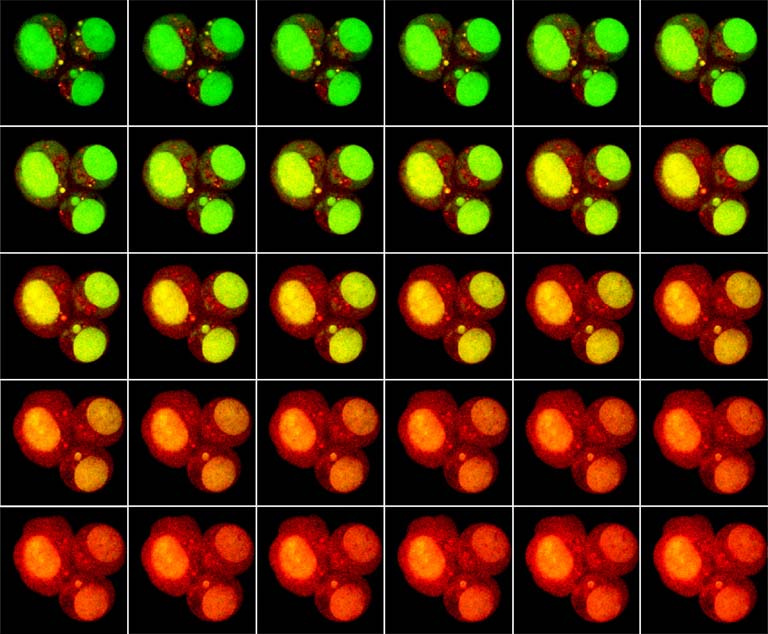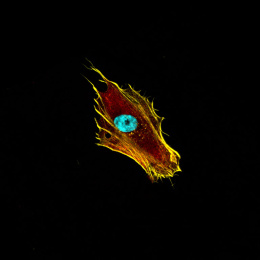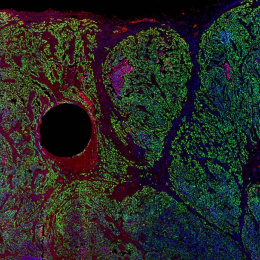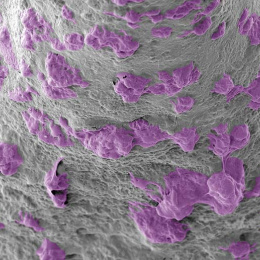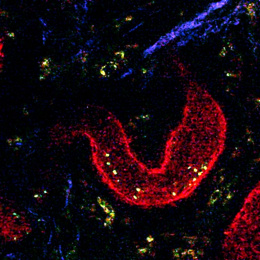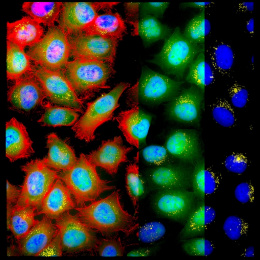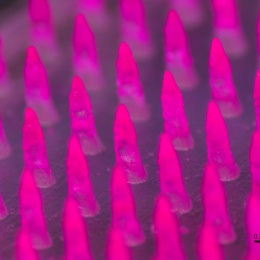Precision Polymers Improve Combination Chemotherpay
Precision Polymers Improve Combination Chemotherpay
Submitted by Erik Dreaden of the Hammond Laboratory at the Koch Institute for Integrative Cancer Research at MIT
Koch Institute at MIT, MIT Department of Chemistry, MIT Department of Chemical Engineering
Combination chemotherapy has changed little since its advent in the mid 1960s. Inside cells, the appropriate sequence and ratio of a drug in a cocktail can greatly improve its tumor cell killing; however, traditional delivery methods afford little control over either property. The Johnson Lab (MIT Chemistry) and the Hammond Lab (MIT Chemical Engineering) have teamed-up to develop tiny brush-like polymer nanoparticles that load and release precise ratios of chemotherapeutic drug combinations. This strategy improves the safety profiles of these therapies by decreasing the proportion of drug that goes to healthy tissues. The team has also engineered the polymer to release drug in response to specific colors of laser light, further improving the selectivity of these drug therapies. Here, we observe the chemotherapeutic doxorubicin (red) being delivered to live ovarian cancer cells (nuclei, green) over the course of 30 minutes following laser exposure.
